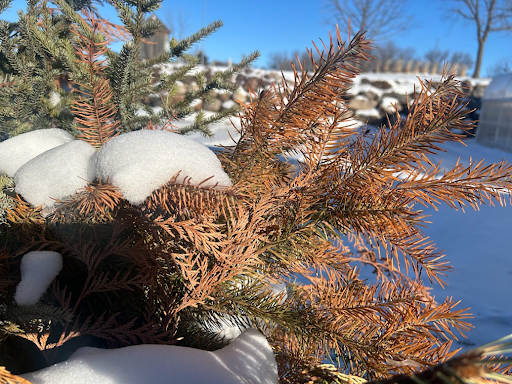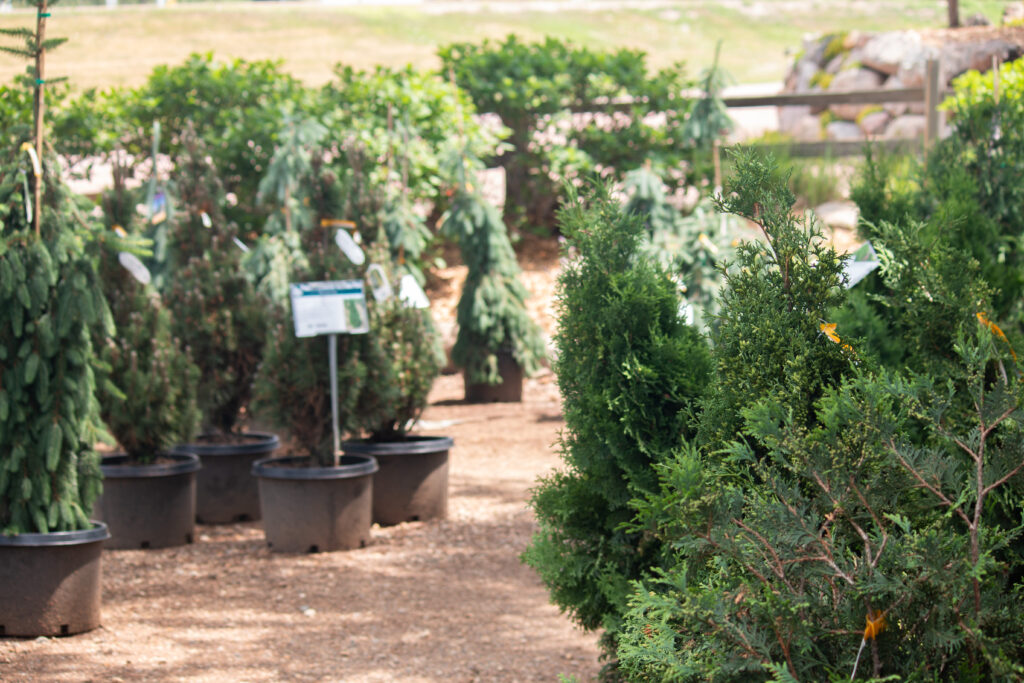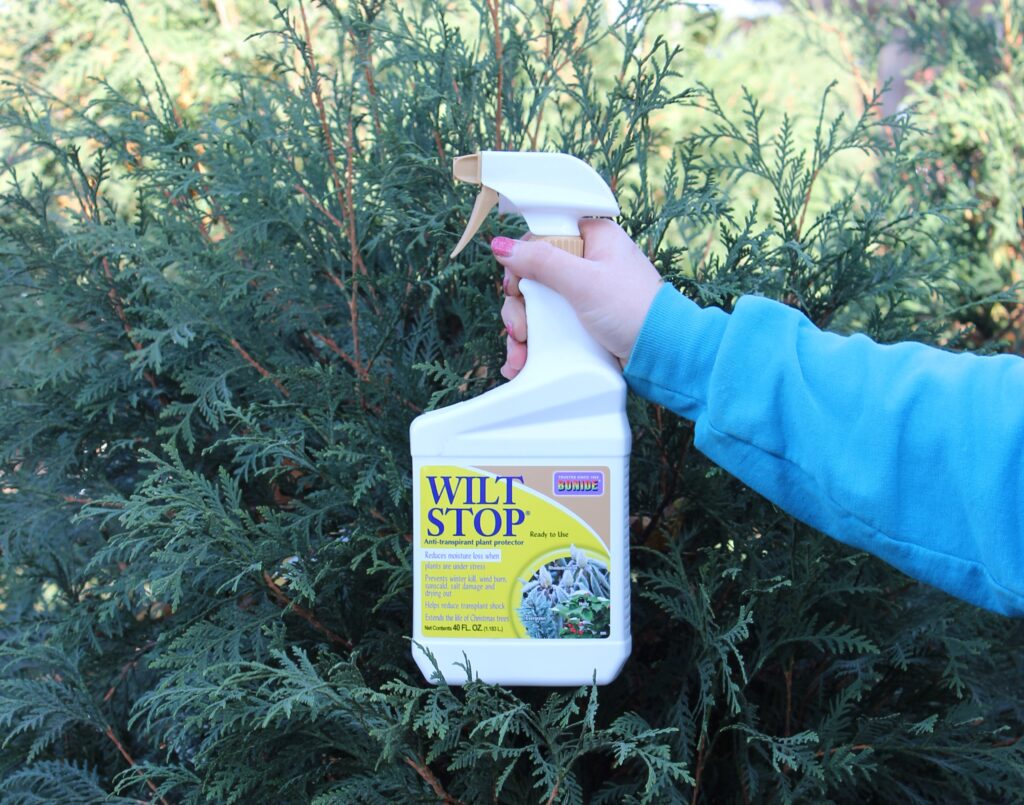As the weather warms up and the snow melts, some people may notice browning on parts of their evergreens. This browning is caused by winter desiccation also known as winterburn. Winterburn damage can range from mild cases, that just need a little pruning, to severe cases that can lead to the death of the plant.
Causes
In the winter when the ground is frozen, evergreen plants are unable to replace the water that is lost through their foliage. This loss of moisture leads to the browning and death of the foliage. Many factors can contribute to an increase in water loss and lead to winterburn damage including:
- Lack of moisture during the growing season: Evergreen plants that go into the winter already stressed from a lack of moisture are more likely to suffer from winterburn.
- Age of the plant: Young or newly planted evergreens do not have as established of root systems compared to older evergreens. This can exacerbate winterburn problems since these plants cannot draw up as much water from their roots.
- Extreme winter conditions: Harsh winter sun and extreme wind can result in extra foliage moisture loss. This is why you will typically see winterburn on the south side of trees or in trees that are planted in unprotected areas. Extreme temperature fluctuations in the winter can also contribute to winterburn damage.
- Lack of snow cover: Snow cover acts like an insulator in the winter and can help not only moderate the soil temperature, but it can also provide much-needed moisture in the early spring. When this snow cover is absent, evergreens are exposed to more extreme soil temperature fluctuations and overall drier soil conditions which can make them more prone to browning.
- Late fertilization: Fertilizing evergreens in the fall can lead to a flush of new growth that is unable to harden off before winter arrives.

Treating Winterburn
Foliage that has already browned is most likely dead and will not green up again. This does not mean, however, that the entire branch is dead. In most evergreens, the buds are more cold-hardy than the needles and may still produce new growth in the spring. Mild cases of winterburn damage can usually be pruned out and after a few years, new foliage will fill in damaged areas. In severe cases where all or most of the tree is brown, the plant is unlikely to recover and should be replaced.
For arborvitaes, boxwoods, junipers, and yews, it is best to wait until mid-spring before pruning. This way you can see the new growth and can get a better idea of where to prune. When pruning, cut the branches back to the point where you begin to see new growth. If you are unsure whether the whole branch is dead, you can gently scratch the bark on the affected branch. If there is green underneath the bark, the branch is still alive and has the possibility of forming new foliage. If it is brown under the bark or if the branches are dry and snap easily, it is likely that the branch is most likely dead and should be pruned. It is always good to check your branches in multiple areas as the tips of the branches may be dead but further down there may be life in the branch.
Pines, spruce, and fir trees usually do not have to be pruned since the new growth at the tips of the branches will usually replace the damaged needles.

Prevention
While you may not be able to completely prevent winterburn, there are some steps that you can take to help reduce the risk and severity of winterburn.
One of the most important ways to help prevent winterburn is proper watering of your plants throughout the year. Proper watering is especially important in years where there are long extended dry periods. We want our evergreens to go into the winter well-hydrated so it is important to continue to water your plants up until the soil freezes. It is best to use a soaker or drip hose to water your evergreens as this ensures that the water is penetrating deep into the soil and reaching the roots. See our Watering 101 guide for more information about how to properly water your plants.
Picking the proper place for your evergreens can also help to prevent winterburn. Planting your evergreens in a protected area that is shielded from the drying winter sun and wind can help reduce the risk or severity of winterburn damage. Evergreens planted in unprotected areas can be wrapped in burlap to protect them through the winter. Wait to wrap your trees until the temperatures are in the mid-30s and be sure to remove the burlap when the temperatures begin to heat up in the spring to avoid overheating your plants.
Another way to protect your plants is by applying an anti-desiccant or anti-transpirant spray. These sprays create a protective coating on the evergreen needles that helps to lock the moisture in.
Lastly, avoid pruning or fertilizing your evergreens in the fall. Both pruning and fertilizing can lead to a flush of new growth that is unable to harden off before the freezing temperatures arrive. This tender new growth is at high risk of winter damage.


